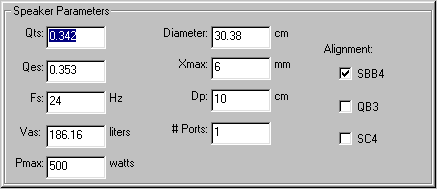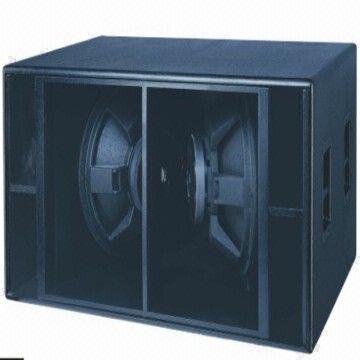
Hoffman's Iron Laws therefore mandate low efficiency under those constraints, and indeed most subwoofers require considerable power, much more than other individual drivers.

Deep low frequency extension is a common goal for a subwoofer and small box volumes are also considered desirable. Where the variables are Thiele/Small parameters. The efficiency of a speaker driver is given by: The largest available sound reinforcement subwoofers, 21" drivers, are less commonly seen. The most common subwoofer driver sizes used for sound reinforcement are 10", 12", 15" and 18" models. On the smaller end of the spectrum, subwoofer drivers as small as 4" may be used, depending on the design of the loudspeaker enclosure, the desired sound pressure level, the lowest frequency targeted and the level of permitted distortion. Some uncommon subwoofers use larger drivers, and single prototype subwoofers as large as 60" have been fabricated.

Subwoofers use speaker drivers (woofers) typically between 8" and 21" in diameter.


 0 kommentar(er)
0 kommentar(er)
